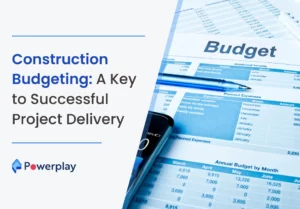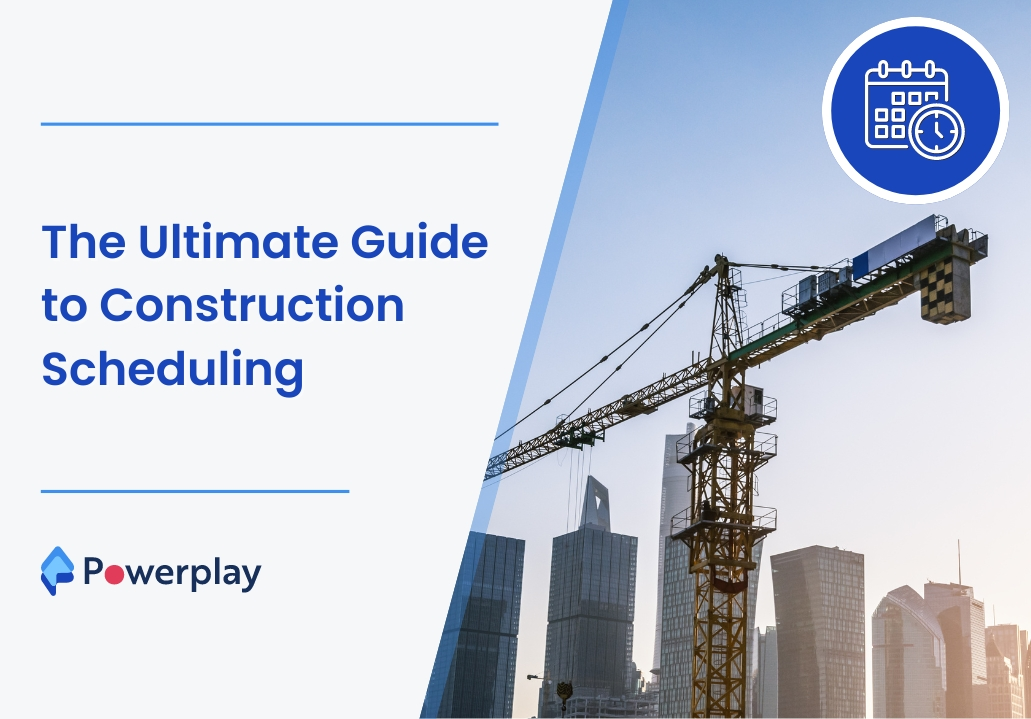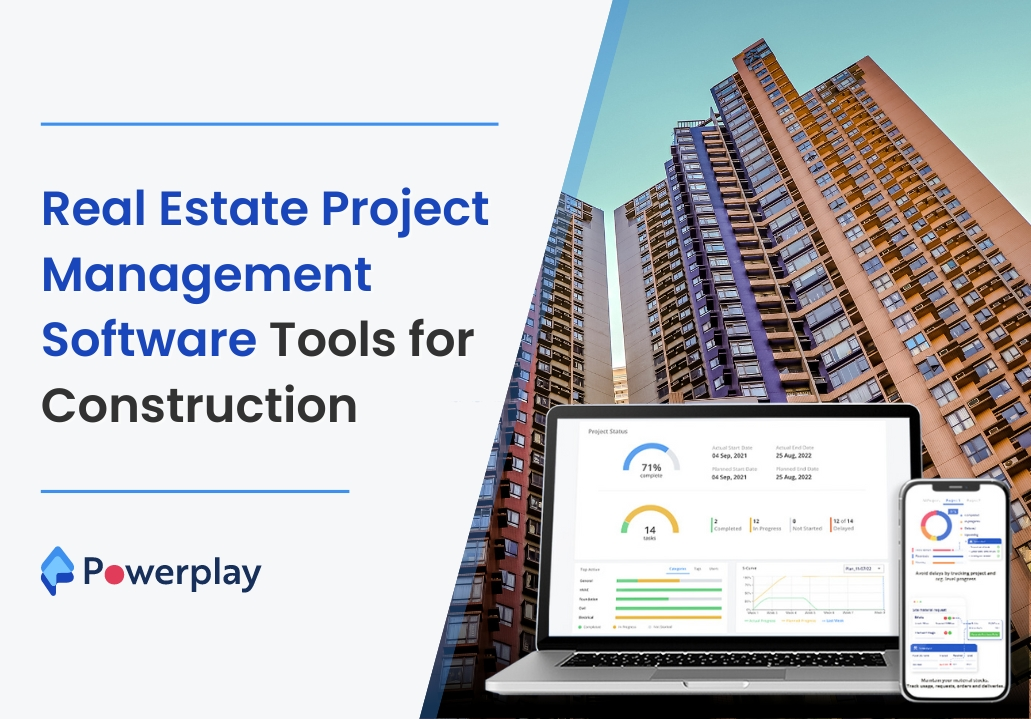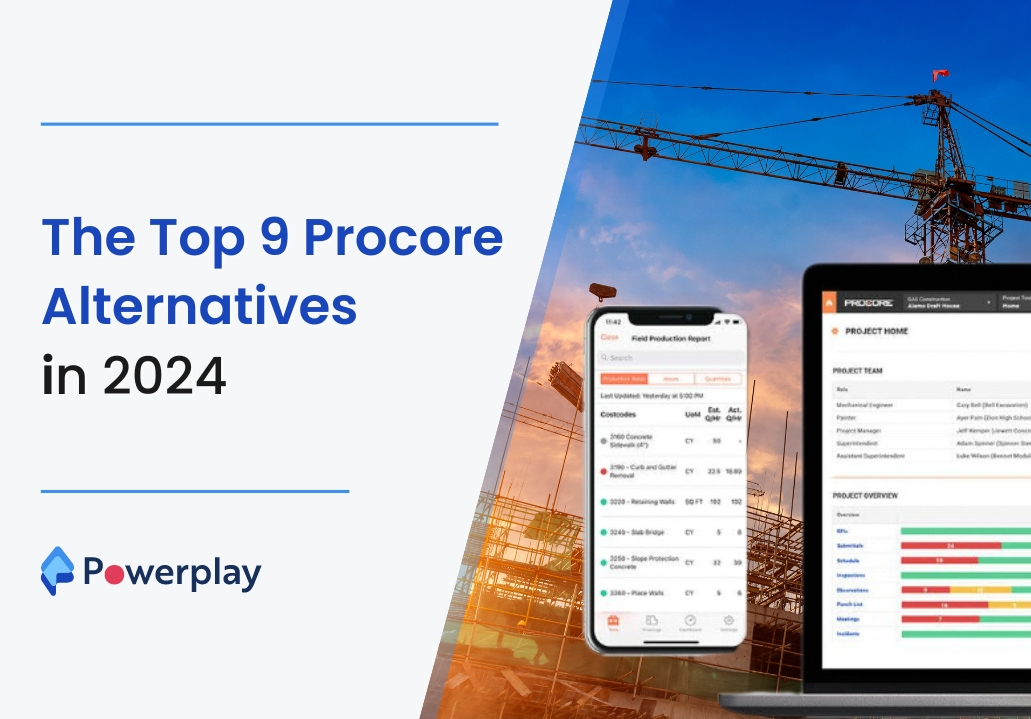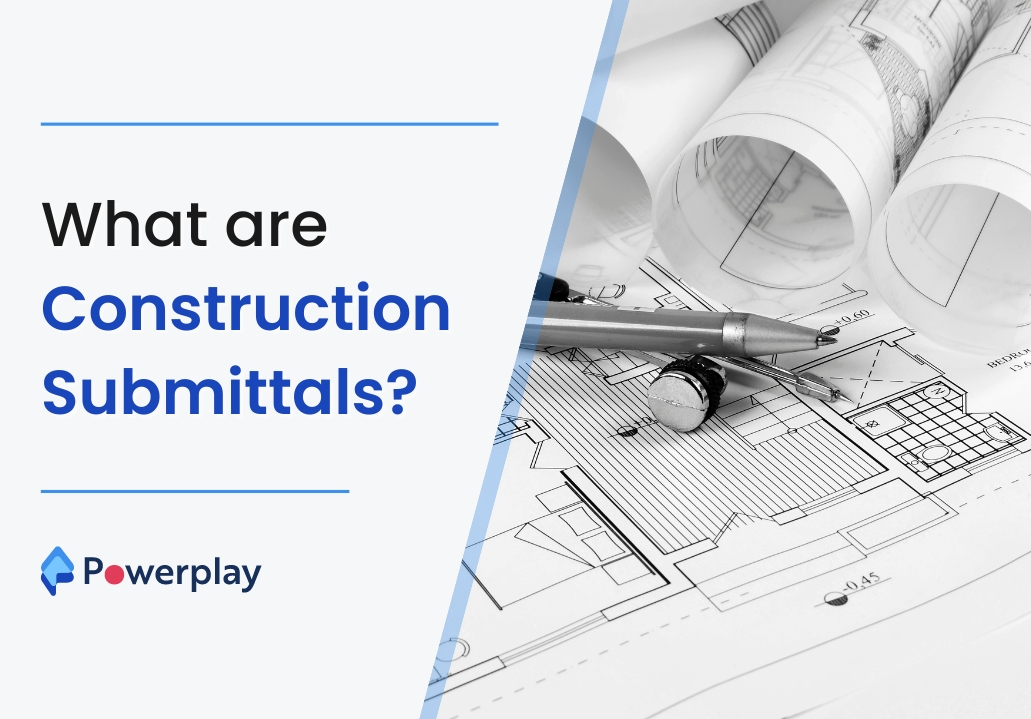What Is Construction Planning: The Steps For Success
-
Sapna
- April 3, 2024

Construction planning is a critical step in ensuring the success of any construction project. Without effective construction planning, projects risk delays, cost overruns, and failure to meet specifications.

Effective construction planning involves outlining key components, sequencing activities, estimating durations, planning resources, and creating a schedule and budget. It ensures project completion on time and within budget and maximises productivity and efficiency. It also improves safety and streamlines the procurement process.
According to research, companies that follow effective construction planning have increased their project success rate by up to 90%, and approximately 43% of companies report that they complete their projects within budget.
In this blog, let’s explore the essentials of construction planning, its key terms, various types, and steps to develop an effective plan. We will also learn about Powerplay’s role in streamlining construction planning for enhanced efficiency and outcomes.
Table of Contents
ToggleWhat is construction planning?
Construction planning is a process for a construction manager to manage and execute a construction project from building design to completion. It involves listing activities, creating a schedule, defining the scope of work, setting timelines, allocating resources, and establishing communication protocols. The plan serves as a master plan to ensure the smooth completion of projects within deadlines, budget constraints, and quality standards.
Effective construction planning is crucial as it systematically organises every aspect of a construction project, ensuring optimal utilisation of resources, time, and efforts to achieve project goals. It provides a roadmap for the team members and facilitates coordination among stakeholders.
Important construction project planning terms
Effective construction planning is important in completing a project on time and within budget. It outlines the pace of work and dictates task execution. It also defines processes, methods, and sequences for material placement, ensuring efficient resource use.
A well-prepared construction schedule enhances quality control measures and ensures proper work sequencing. It facilitates timely procurement of materials, improving safety performance by tracking onsite workers and adhering to protection guidelines.
Reliable scheduling also allows better time allocation among stakeholders, reducing the likelihood of cost overruns and delays and minimising unpleasant surprises. Overall, construction project planning is vital for maximising efficiency, productivity, and safety in construction projects.
Types of construction project planning
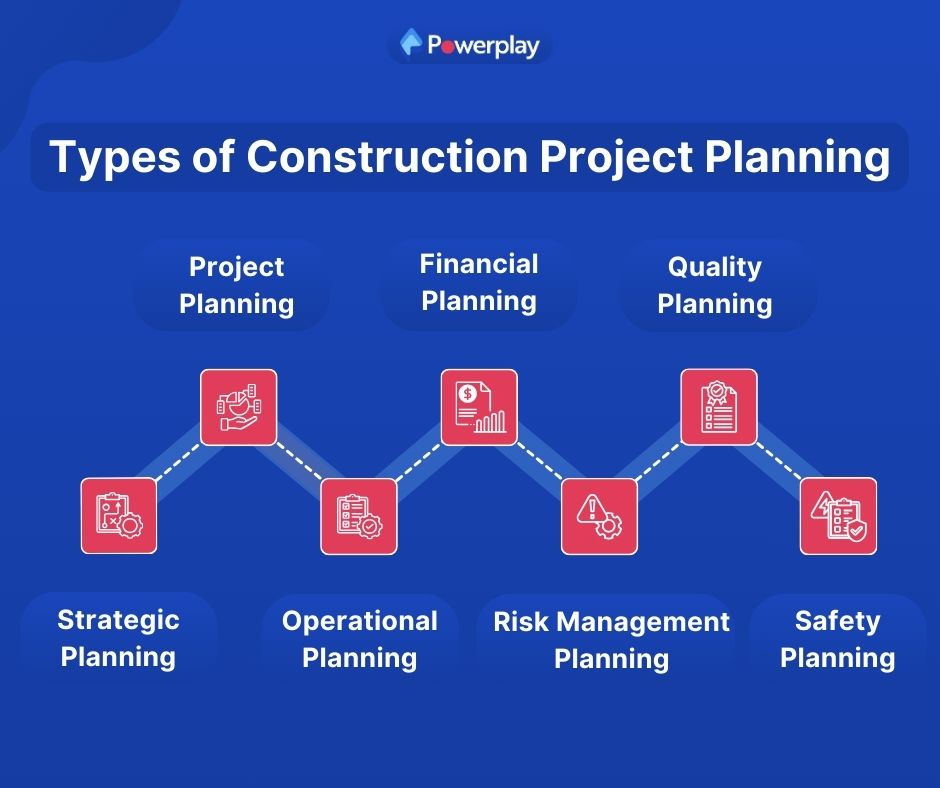
Strategic Planning
- It involves defining the long-term goals and objectives of the construction company or project.
- It sets the direction for the organisation and guides decision-making at a high level.
- Strategic planning may include market analysis, identifying competitive advantages, and setting priorities for growth and development.
Project Planning
- It focuses on the specific details of a construction project, including scope, schedule, budget, and resources.
- It involves breaking the project into small tasks, establishing timelines, and assigning responsibilities.
- Project planning is critical for ensuring the project’s completion on time, within budget, and meets all the required quality standards.
Operational Planning
- In operation planning, we need to plan things related to the day-to-day operations and logistics of a construction project.
- It includes planning for the procurement of materials, scheduling labour and equipment, and coordinating onsite activities.
- Operational planning ensures that the project runs smoothly and efficiently daily.
Financial Planning
- It involves budgeting and managing the financial resources of a construction project or company.
- It includes estimating costs, forecasting revenue, and managing cash flow.
- Financial planning is essential for maintaining the financial health of the project and ensuring profitability.
Risk Management Planning
- Focuses on identifying, assessing, and mitigating risks that could impact the construction project.
- It includes developing strategies to minimise the likelihood and impact of potential risks such as delays, cost overruns, and safety incidents.
- Risk management planning helps ensure the project is prepared for uncertainties and can respond effectively to challenges.
Quality Planning
- Setting quality standards and implementing measures to ensure the construction project meets these standards.
- It includes defining quality criteria and conducting inspections. It also secures compliance with industry standards and regulations.
- Quality planning is crucial for delivering a project which meets the expectations of all the stakeholders.
Safety Planning:
- Focuses on ensuring the health and safety of workers and the public during the construction process.
- It includes developing safety policies, conducting hazard assessments, and implementing safety measures such as training, protective equipment, and emergency response plans.
- Safety planning is essential for preventing accidents and injuries on the construction site.
Steps To Develop a Construction Plan
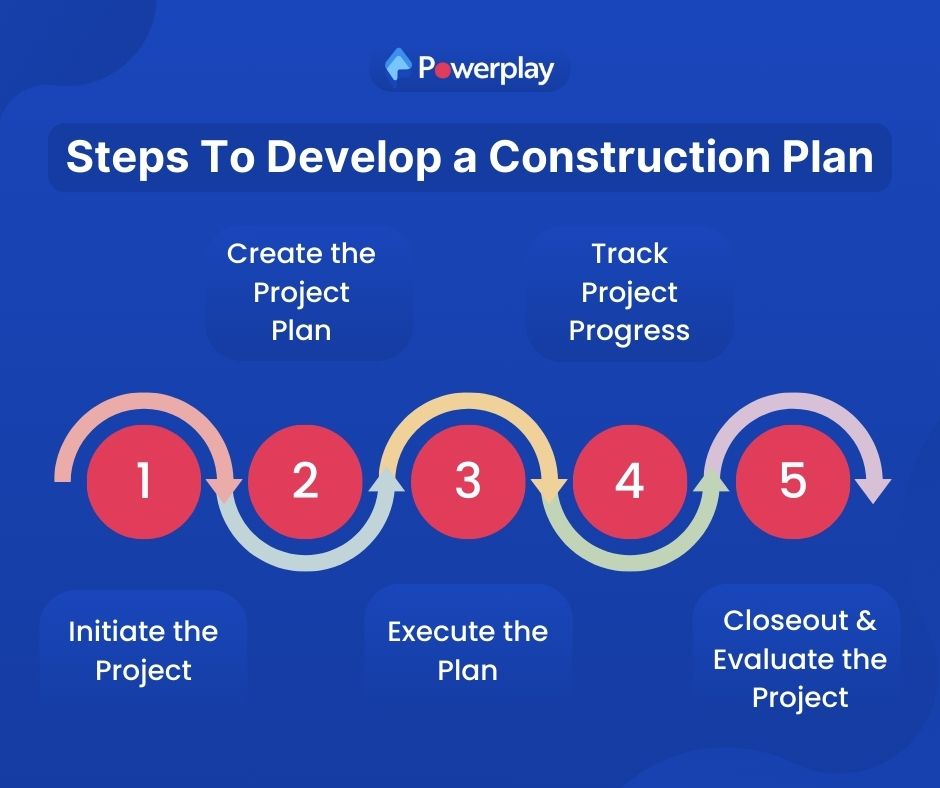
Developing a construction plan is a meticulous process guiding a project from inception to completion. It involves several critical steps, each requiring detailed attention and strategic thinking.
Here’s a detailed walkthrough of each step:
1. Initiate the Project:

The initiation phase sets the direction for the project. It involves defining its aims and establishing its scope. This stage is crucial for aligning stakeholders’ expectations and securing the necessary approvals to proceed with the project.
- Define Project Objectives: Clearly state the goals and outcomes expected from the project.
- Identify Stakeholders: Determine who will be impacted by the project and who needs to be involved in the planning process.
- Assess Feasibility: Evaluate the project’s viability in terms of time, cost, and resources.
- Secure Approvals: Obtain necessary permissions and approvals from authorities or management to proceed with the project.
2. Create the Project Plan:
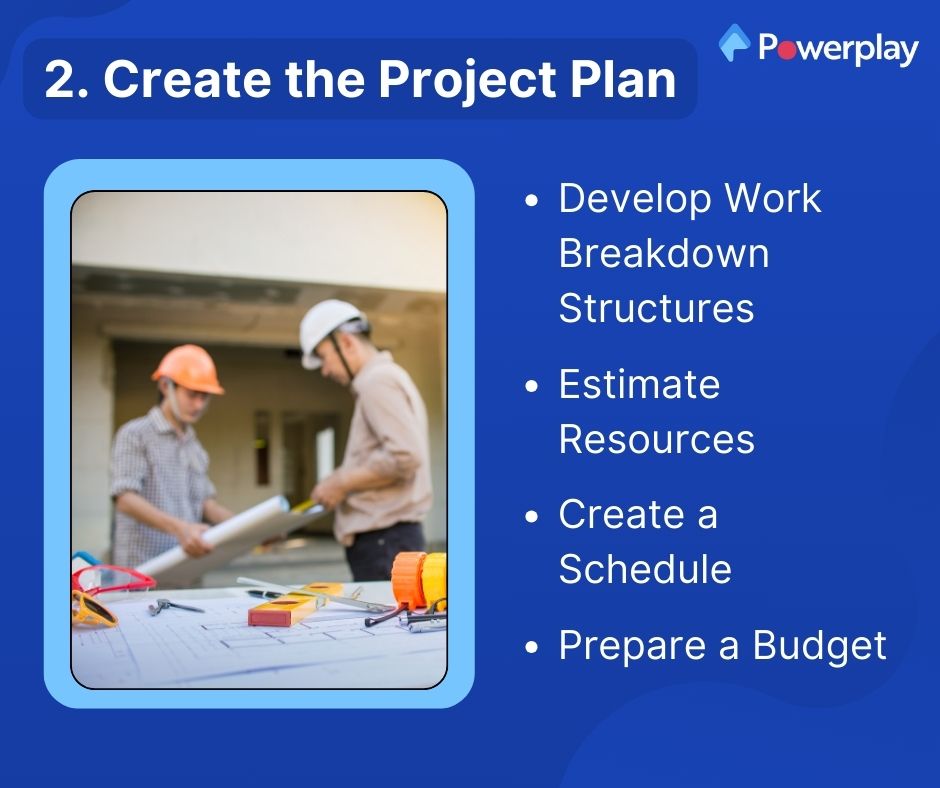
This step details how the project will be executed, monitored, and controlled. It includes developing a schedule, budget, and plans for quality, risk, and communication management.
- Develop Work Breakdown Structure (WBS): Break down the project into smaller, manageable tasks.
- Estimate Resources: Determine the labour, equipment, and materials needed for each task.
- Create a Schedule: Develop a timeline that outlines the deadline of tasks.
- Prepare a Budget: Estimate the costs associated with the project and allocate funds accordingly.
- Create a Risk Management Plan: Find out potential risks and outline strategies to mitigate them.
3. Execute the Plan:

During the execution phase, the project plan is put into action. It involves coordinating people and resources to carry out the tasks outlined in the plan.
- Mobilise Resources: Assemble the team and gather the necessary materials and equipment.
- Implement Tasks: Follow the project schedule and ensure that the completion of tasks is as planned.
- Monitor Quality: Ensure that the work meets the established quality standards.
- Communicate Progress: Keep stakeholders informed about the project’s status and any deviations from the plan.
4. Track Project Progress:

Monitoring and controlling the project’s progress is essential to staying on track. It involves comparing actual performance against the plan and making adjustments as needed.
- Track Task Completion: Regularly update the project schedule to reflect the progress of tasks.
- Manage Changes: Handle any changes to the project scope or schedule in a controlled manner.
- Control Costs: Monitor spending and ensure that the project stays within budget.
- Address Risks: Respond to emerging risks or issues impacting the project.
5. Closeout and Evaluate the Project:

Once the project is complete, it’s important to close it and formally reflect on its success. It involves handing over the finished project, releasing resources, and assessing its performance.
- Finalise Deliverables: Ensure all project outputs are completed and accepted by the client or stakeholders.
- Release Resources: Disband the project team and return any rented equipment or materials.
- Document Lessons Learned: Review what went well and what improvements are needed for future projects.
- Evaluate Performance: Assess the project’s success in terms of meeting its objectives, staying on schedule, and remaining within budget.
Seamless Construction Planning With Powerplay
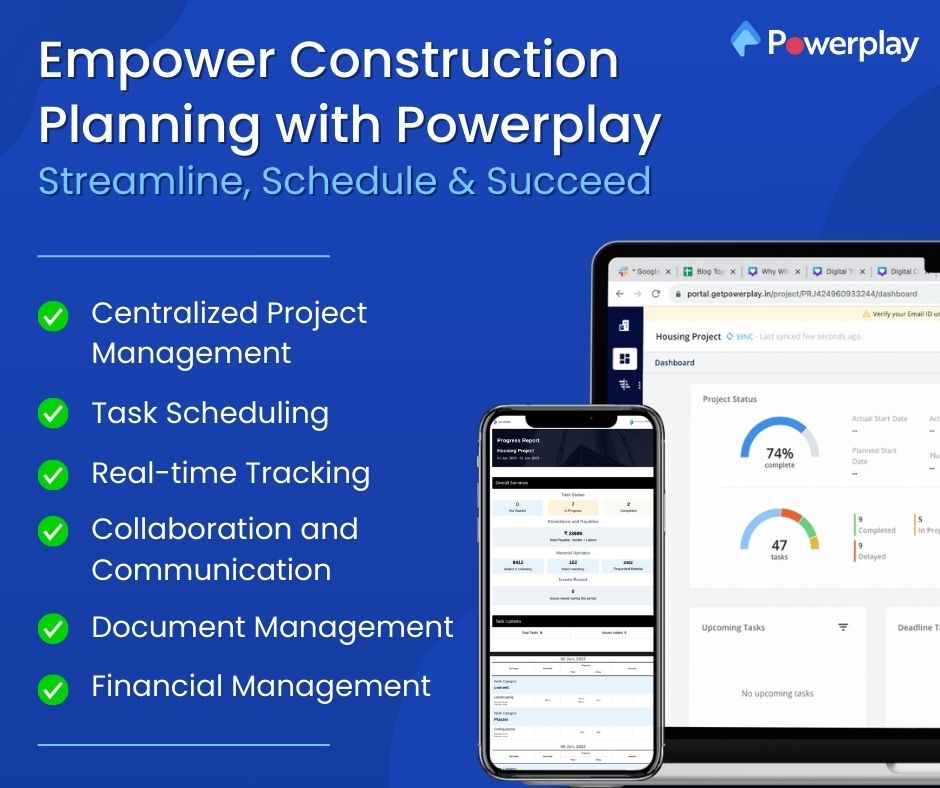
Powerplay is a mobile and web-friendly construction management software that helps to streamline the planning and execution of construction projects.
Here’s how Powerplay can assist in effective construction planning:
- Centralised Project Management: Powerplay allows users to manage multiple construction sites and projects from a single platform. This centralised approach enables better coordination and oversight, reducing the chances of miscommunication and errors.
- Task Scheduling: Users can schedule tasks and activities, ensuring that all project milestones are planned. They can also set deadlines, assign tasks to team members, and track progress in real-time.
- Real-time Tracking: Powerplay offers real-time tracking of the project’s progress, task status, resource utilisation, and other key metrics. It helps identify delays or issues early on and ensures timely interventions to keep the project on track.
- Collaboration and Communication: It facilitates seamless communication among project stakeholders, including contractors, subcontractors, and clients. Ensuring everyone is on the same page and can collaborate effectively to achieve project goals.
- Document Management: Powerplay provides a centralised repository for all project-related documents, including plans, contracts, and reports. It makes accessing and sharing information easy and ensures all stakeholders have the latest updates.
- Financial Management: With Powerplay, users can manage budgeting, cost tracking, and financial reporting. These help maintain financial control over the project and ensure it stays within budget.
Conclusion
Construction projects with well-defined construction plans have a higher chance of success. Effective construction planning maximises efficiency, productivity, and safety on the construction site. It also allows for better project control, reducing the likelihood of cost overruns and delays.
By following all the steps for effective construction planning, project managers can navigate the complexities of construction projects and achieve optimal outcomes. So plan and manage your construction projects effectively with India’s top construction management software, Powerplay, and reach the heights of success in the construction business.

